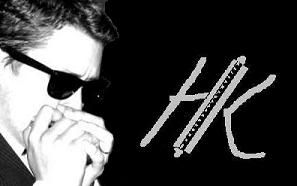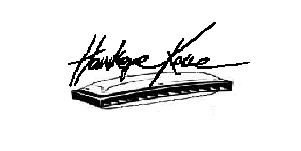puri
29 posts
Feb 13, 2013
8:30 AM

|
Normally I know just a little bit about PAs but I've just ordered a LW harp break so I think it's time to learn more about it. I know that output from most vintage mics is hi-z, line out from the amp is probably hi-z too? also is the output from the pedal hi-z as well? I have a feeling that they're probably all hi-z.
This basically means that for me, in these cases;
- plugging my mic straight in
- mic => pedal => board
- mic => small amp => line out to board *my mic is hi-z
I'll be looking for a hi-z input on the board. Is that correct?
The problem is PAs come in different brands & shapes and they use different terms for certain things so without something obvious like "instrument" or "high impedance" how can I tell that the input is for hi-z? What are the words that I must look for?
For example, the PA at my friend's bar has a couple of 1/4" female that said insert-unbalanced, is this it?
Also, if there's no hi-z input on the board I know that DI box can help but could an IMT do the job too? It's much cheaper and lighter and seem to be a reasonable way to solve the problem for me. Answer anyone you like guys, I know that was a lot of questions but might as well get it right now that these questions popped up in my head.
Thanks,
Puri
|
HawkeyeKane
1474 posts
Feb 13, 2013
8:38 AM

|
Yes, the 1/4" inputs on the board will be hi-Z. You can do a couple things here.
If you like a hi-Z unbalanced sound, then just go straight from your pedal to the board with a 1/4" cable.
But if you like it to be balanced, you can either use an impedance transformer from the pedal's jack and connect it to an XLR cable to run into the PA's XLR inputs. OR, you can run the 1/4" jack of your pedal to a DI box, and then run an XLR cable from the DI's balanced output to the board.
You probably don't need to worry about a PA board not having hi-Z inputs. I don't think I've seen one without them in a LONG time.
----------


Hawkeye Kane
Last Edited by HawkeyeKane on Feb 13, 2013 8:43 AM
|
HarpNinja
3193 posts
Feb 13, 2013
8:42 AM

|
Unless you are running sound, the easiest thing to do is bring a DI box along with you. You'll plug in with a 1/4" and it will let you send an XLR to the board. Most modern PAs will have plenty of line level inserts, but all of them will have XLR
----------
Custom Harmonicas
Optimized Harmonicas
|
puri
30 posts
Feb 13, 2013
9:02 AM

|
Thanks guys, so my understanding was correct then?
@Hawk, is that means that all the 1/4 are for hi-z and are the same? It seems to me that they're there for a few different functions. There are about 10 1/4 inputs on my friend's board that labelled for different things. Could you explian me a bit more about that? Thanks. Ah! I'd also like to know more about the balanced/unbalanced thing as well if you could help me on that.
@Mike, so the line level insert is the hi-z input?
|
HawkeyeKane
1476 posts
Feb 13, 2013
9:54 AM

|
Without actually taking a look at the board and what the jacks are labeled as, I can't tell you for sure if they're hi-Z or not. But if they're lined up on each channel next to the XLR inputs, then they should be hi-Z unbalanced. Jacks labeled "line" are better suited for things that are running at line level outputs. The only 1/4" jack on a PA board that I can think of off the top of my head that would be balanced and low-Z might be a headphone out jack because these days they all tend to be stereo.
Balanced vs unbalanced can pretty much be summed up in terms of grounding. A typical 1/4" instrument or speaker connection has two surface contacts on its plug and in the jack, so there's no ground. A balanced XLR connection has a third contact for grounding. That's partly why balanced connections are considered low-Z, because with the ground, there is far less electrical resistance than with a connection that has no grounding.
Balanced audio has a distinct advantage over unbalanced because with the ground line, it's less susceptible to outside noise pickup or interference, and longer cables can be used more effectively. There also ARE balanced 1/4" connection applications, like headphones as I mentioned before.
----------


Hawkeye Kane
Last Edited by HawkeyeKane on Feb 13, 2013 10:08 AM
|
orphan
207 posts
Feb 13, 2013
10:23 AM

|
puri, aside from the unbalanced/hi-Z inputs, a lot of mixers have a jack labeled insert above or below the hi-Z input. You can use this as FX in/out. To do that you use a stereo 1/4 plug into the insert jack.
|
puri
31 posts
Feb 13, 2013
6:32 PM

|
Hmm, alright, I get the balanced/unbalanced thing now. So I'd be looking for an unbalanced for the purposes in the OP. Now, what's the line level input? Is it what I'm looking for or it's something else?
@orphan, is the input that labeled "insert" different from the ones that labeled "unbalanced"? or are they the same things with different names? and how can you tell if one is mono or stereo? I thought I'd only have to look for a mono input now there's something more to learn about. What's the different between a mono and stereo jacks? Aren't all the instrument jack mono?
|
MrVerylongusername
2478 posts
Feb 14, 2013
5:00 AM

|
You can't tell just by looking at a socket whether it's a TS "mono" or a TRS "stereo" connector. On a PA desk, TRS sockets are used for balanced 1/4" connections and for combined effects sends and returns (the inserts). Golden rule: just because something can plug into a socket it doesn't mean it should!
The best option by far with a hi-z mic is a DI box into a regular mic-channel.
|
orphan
210 posts
Feb 14, 2013
5:03 AM

|
puri, "insert" jack is like the effects send and return on an amp. An amp will typically have two separate jacks, one (send) for the signal coming out of the preamp stage of the amp into a stomp box, effects processor, etc., and one (return) for the signal coming out of the stomp box, effects processor, etc. back into the preamp. The insert jack uses a TRS or Stereo 1/4 plug so it is able to send the preamp signal to an outboard unit and also be able to receive that signal back (processed from an outboard unit back to the preamp stage. So yes it has a completely different function from the XLR and hi-Z inputs. I used the term "Stereo 1/4" plug" because it is a TRS (tip, ring, sleeve) plug that can carry two signals, eg: Stereo Left and Stereo Right. Some effects units have an insert jack, like rack units. If the effects unit does not have an insert jack, you can use a y plug that has a TRS 1/4" plug on one end and two regular 1/4" plugs on the other. Most of the time you go into the mixer after you have run your signal through your effects then into the mixer. Not saying that you should use the insert, it is just an explanation of what the insert jack is on a mixer or PA channels.
|